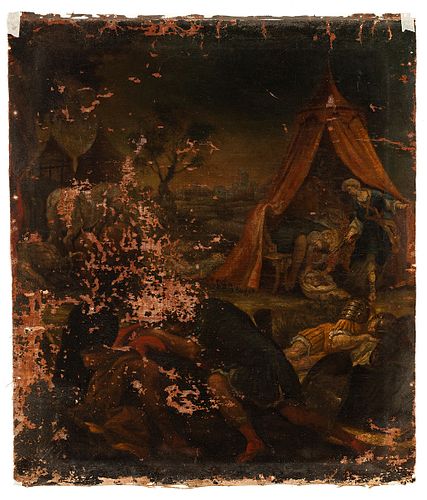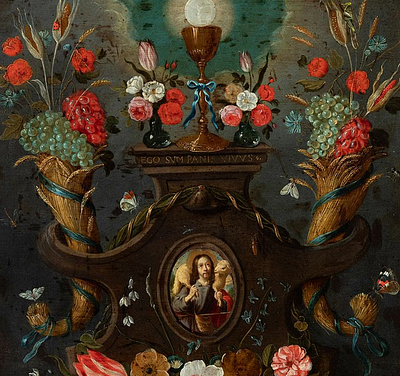Spanish or Italian school; last third of the 17th century. "Judith and Holofernes". Oil on canvas.
Lot 46
About Seller
Setdart Auction House
Carrer Aragó 346
Barcelona
Spain
Setdart Subastas was born in 2004 and is currently the first online art auction in Spain with solidity, prestige and reliability guaranteed by our more than 60,000 users. Setdart has a young, dynamic and enterprising team ready to successfully manage the purchase and sale of art works through custom...Read more
Estimate:
EUR€500 - EUR€700
$526.32 - $736.84
Absentee vs Live bid
Two ways to bid:
- Leave a max absentee bid and the platform will bid on your behalf up to your maximum bid during the live auction.
- Bid live during the auction and your bids will be submitted real-time to the auctioneer.
Bid Increments
| Price | Bid Increment |
|---|---|
| EUR€0 | EUR€10 |
| EUR€200 | EUR€25 |
| EUR€500 | EUR€50 |
| EUR€1,000 | EUR€100 |
| EUR€3,000 | EUR€200 |
| EUR€5,000 | EUR€500 |
| EUR€10,000 | EUR€1,000 |
| EUR€20,000 | EUR€2,000 |
| EUR€50,000 | EUR€5,000 |
About Auction
By Setdart Auction House
Sep 21, 2021
Set Reminder
2021-09-21 10:00:00
2021-09-21 10:00:00
America/New_York
Bidsquare
Bidsquare : 21st September - ARAS JÁUREGUI Private Collection - Old Masters, 19th & 20th Century
https://www.bidsquare.com/auctions/setdart-auction-house/21st-september---aras-j-uregui-private-collection---old-masters-19th-20th-century-7429
Setdart Auction House sofia@setdart.com
Setdart Auction House sofia@setdart.com
- Lot Description
Spanish or Italian school; last third of the 17th century. "Judith and Holofernes". Oil on canvas. It presents important faults and leaps in the painting. The stretcher is missing. Restoration needed. Measurements: 94 x 80 cm. In spite of the state of conservation of the piece, it is possible to glimpse a landscape where several scenes are developed in a narrative way. The most important of these is the one on the right-hand side of the composition. Here there is a tent with several characters inside it, whose actions are in keeping with the biblical narrative describing the story of Judith and Holofernes. This is narrated in the biblical book of Judith, belonging to the Old Testament, the story of this Hebrew widow, in the midst of Israel's war against the Babylonian army, erroneously called Assyrian. With beautiful features, high education and great piety, religious zeal and patriotic passion, she tells how Judith discovers that the invading general, Holofernes, has fallen in love with her. Accompanied by her maid, the widow descends from her walled city besieged by the foreign army and, deceiving the soldier into believing she is in love with him, manages to enter his tent. Once there, instead of yielding to his gallant advances, she intoxicates him. When Holofernes falls asleep, Judith cuts off his head, throwing the Babylonian army into confusion and thus securing victory for Israel. This is a frequent theme in the history of art from the Baroque onwards. Although in the Baroque period, the aim was expressly to create a dramatic and bloody depiction of the story, which is why the moment of decapitation was generally chosen, in this particular case, Judith has already performed the act, and her enemy's head rests in a sack.
- Shipping Info
-
In-house shipping available. Please inquire at admin@setdart.com.
-
- Buyer's Premium



 EUR
EUR CAD
CAD AUD
AUD GBP
GBP MXN
MXN HKD
HKD CNY
CNY MYR
MYR SEK
SEK SGD
SGD CHF
CHF THB
THB
















